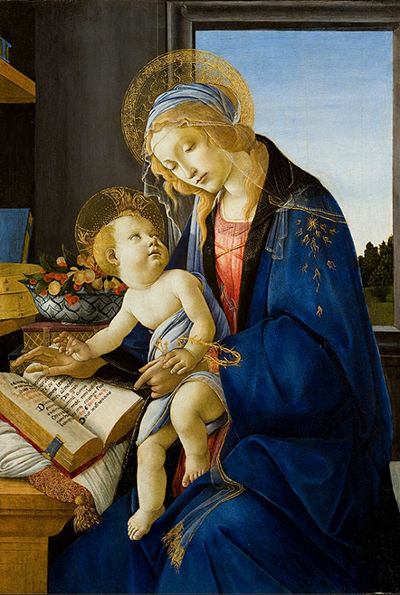Madonna of the Book, or Madonna del Libro, is one of Botticelli's finest depictions of the the Virgin Mary and Child
This fresco dates to around 1480 and has been preserved as well as any other artwork from his career. As such, the bright original colours are still intact today.
The book of the title is being held by Mary. It is believed to be the Book of Hours, the Home beatae Mariae, due to some words which can be seen in the painting. The child holds three nails and a crown of thorns which points to the journey that this young baby was to go on, detailed in the teachings of Christianity.
Elements of the foreground show off the artist's skills as a still life painter, with various items realistically captured alongside the two key figures. The fruit bowl, for example, is exceptionally lifelike and the textures of the book are accurately reproduced.
Mary is dressed in a blue robe which artist Botticelli used frequently when capturing this iconic figure. The darker blue tones would contrast with the lighter skin tones and provide depth to the painting. He would also be able to add markings to the outfit with lighter colours such as whites, golds and yellows and these would stand out even if relatively small.
The Poldi Pezzoli Museum in Milan holds this original artwork and it sits alongside some of other notable titles from the Renaissance. The Dead Christ Mourned, also by Botticelli, is part of their collection as well as Imago Pietatis by Giovanni Bellini. Besides these are works by Lucas Cranach the Elder, Piero del Pollaiolo and Andrea Mantegna.
The Madonna is always portrayed in a thoughtful mood, whilst this particular scene holds more sensitivity and elegance than some of his many other portraits of her and the baby Christ. As his career developed, he would have become very comfortable in putting these common themes together and simply concentrated on pushing on from what he had done before.




